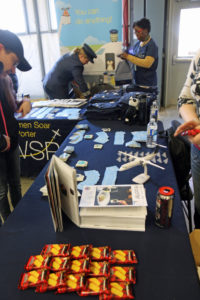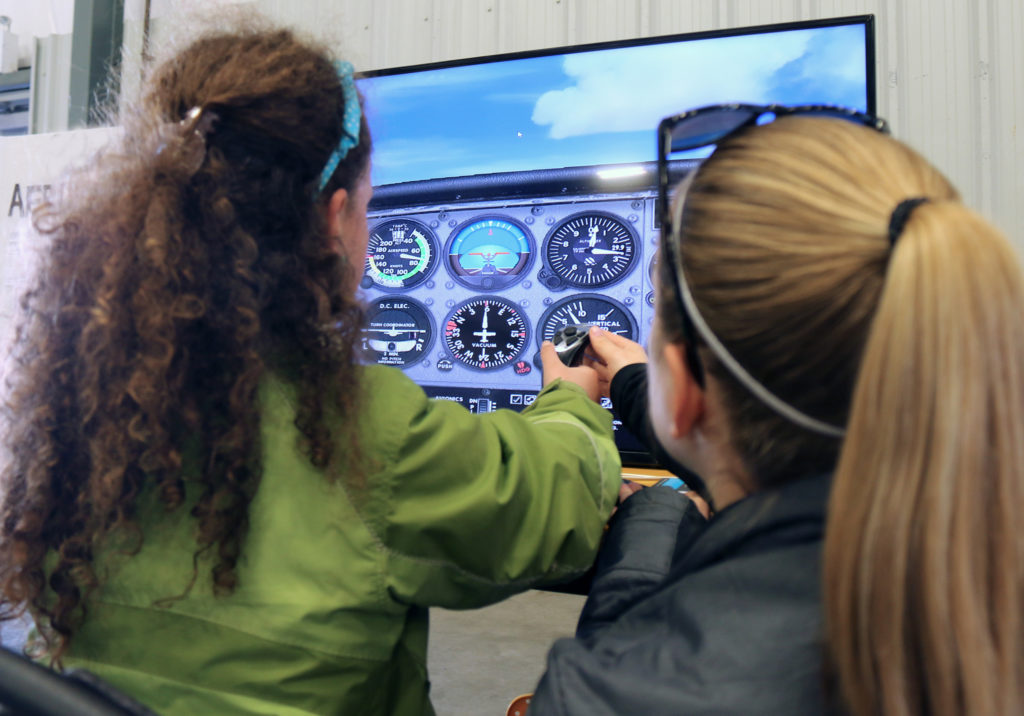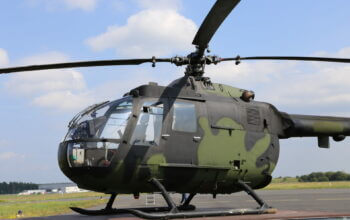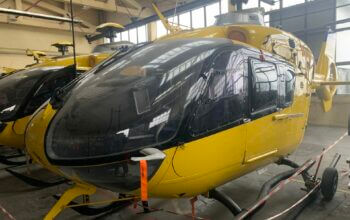Estimated reading time 12 minutes, 7 seconds.
Editor’s note: Lola Reid Allin is a writer, photographer, adventurer and commercial pilot based in Belleville, Ont. This is part 5 of a 5-part series by Lola about the under-representation of women in commercial aviation. Click to read part 1, part 2, part 3, and part 4.
In spite of our enduring struggles as women in aviation, hope is on the horizon.
Changing attitudes to rights and freedoms of the individual brought changing legislation. In America, The U.S. Equal Employment Opportunity Commission (EEOC) created Title VII of the Civil Rights Act of 1964 making it “illegal to discriminate against someone on the basis of race, color, religion, national origin, or sex.” In 1980, the EEOCamended the original law, specifying “that sexual harassment is a form of sex discrimination prohibited by Title VII.”
In Canada, just after I began my commercial aviation career, our government enacted the Charter of Rights and Freedoms (1982) as part of the Constitution Act, the Employment Equity Act (1986), and the Supreme Court of Canada decreed that sexual harassment is a form of sexual discrimination (1989).

These laws were empowering. Women always knew certain behaviours men thrust upon them were offensive, but now governments have made these unwanted and inappropriate actions punishable.
Nevertheless, for the same reason many of the female pilots participating in my survey requested anonymity (see part 1), women remain fearful of stigmatization or job loss, and are hesitant to report or insist upon prosecuting. Yet, they are determined to forge a pathway through the sky, for themselves and for future generations.
Pilot 3 (P3) from my initial survey commented, “While our numbers may not be changing . . . our working conditions are improving. I have no doubt that the [female pilots] I look up to as role models made my life so much easier by being so good at [their] work and created opportunities I might not have had otherwise.”

P4 acknowledges that passengers stare as she emerges from the flight deck or walks through the terminal, but she has not felt any antagonism — just admiration and respect for her achievement as a woman in a male-dominated field. During training and on the job, she has not experienced discrimination or harassment; however, her employer has a “robust sexual harassment and equal opportunities policy that includes disciplinary procedures.”
P5 acknowledged she could “think of a few characters along the way that indulged in an off-color remark or joke, [but] at every stage of my career I have felt accepted and respected by my colleagues.” She believes “things are slowly evolving to improve life for pilots. Some airlines have implemented more flexibility in scheduling to improve quality of life. One example is allowing a pilot returning to work from parental leave to hold half-time schedule for a few months.”
Worldwide, Indian airlines offer the most encouraging statistics. Of India’s 8,797 pilots, 1,092 are female (12.41 per cent), with 385 female captains. In contrast to other professions in India, the aviation industry offers wage parity.
In Canada, Porter Airlines leads the change with 34 female pilots representing 12.73 per cent of its 267 total pilot population. WestJet Encore follows closely at 11.61 per cent, with 62 females in its 534 total pilot population; although, parent company WestJet echoes the North American trend of 5.54 per cent (94 female pilots in a total population of 1,696).

Seattle pilot Kimberly Perkins writes that female pilots “are at a disadvantage from the start since they lack direct access to networking, the passing of information, and access to resources.” Some airlines have established mentoring programs for women to minimize marginalization of female pilots and enable women to break into this “old boys” club.
In 2016, Toronto’s Porter Airlines launched Women Soar at Porter (WSP), a deliberate approach to “bridge the gender gap” and become “the airline of choice for women in aviation.” Currently, Porter’s chief pilot is Paola Fierro. Focusing on awareness, the airline’s strategies include outreach to girls and women in secondary and post-secondary educational institutions who might otherwise bypass aviation as a career choice, as well as to women enrolled at flight training institutions.
Additionally, Porter partners with the Northern Lights Aero Foundation formed in 2009 “to encourage women in Canada to succeed in careers in aviation and aerospace,” and partners with annual events offering free flights to girls and women, such as Girls Can Fly (Waterloo Wellington Flight Centre, Waterloo, Ont.) and Girls Take Flight (Durham Flight Centre, Oshawa, Ont., and the 99s).

When girls are introduced to and encouraged by female pilots, these concrete role models enable them to visualize themselves as pilots and realize a career in aviation is possible. Thirty-two-year-old Emily Crombez, a 17-year veteran of aviation and the first female pilot to fight forest fires in the Canadair CL-415, said in June of this year, “I have spent many years mentoring young people, trying to instill a certainty that there are no boundaries. It is my hope that these young girls will be able to blaze their trail without having to overcome gender adversities.”
SIDEBAR
Do peer groups exist for female pilots?
Since 1929, private and commercial female pilots in North America have enjoyed the camaraderie offered to members of Amelia Earhart’s Group of 99s. However, before the internet revolutionized communication, female pilots in Canada’s remote regions rarely joined the 99s. The nearest group of 99s could be several hundred miles distant, and few women were pilots. When I began flying in 1979, I was one of 200 women in Canada with a commercial pilot license (CPL) or airline transport pilot (ATP) license.
Prior to ubiquitous and inexpensive long-distance telephone plans and the communication capabilities of the internet, a lone female pilot needed indomitable confidence, self-reliance, and an impermeable skin to prevent erosion of confidence — whether or not she experienced gender discrimination or sexual harassment. While she likely had friends and confidantes, on the job she struggled alone.

During the past two decades, the internet has significantly improved communication. Instead of being in solitary confinement as I was in the latter part of the 20th century, female pilots today may find their confidantes as colleagues employed by the same airline. If not, the internet enables solidarity with organizations such as the International Society of Women Airline Pilots (ISWAP), Women in Aviation International (WAI), and Canadian Women in Aviation (CWIA).
Female pilots flock to symposiums and workshops to celebrate friendships, exchange ideas, and support each other. In 1990, 150 gathered for the first Women in Aviation Conference at Embry-Riddle Aeronautical University, Ariz.; in 2017, 4,500 women from 19 countries attended the 28th Annual WAI Conference, Fla. Moreover, scholarships are awarded to promising young female pilots by ISWAP, WAI, and the 99s in Canada and America.
Canadian Women in Aviation hosts an annual conference to “forge friendships and allies” and encourages female pilots to attend because “it’s a tough world out there.” On the CWIA website, pilot Contessa Bishop testified, “Coming from a family of non-aviators, I am super blessed for the relationships and the sisterhood that I have gained after attending my first conference. It is my honour and excitement to nourish this tribe in a variety of little ways. It is our joint small contributions that generate a support network to feed the individual and make room for more women in aviation as a whole.”
Elevate Aviation in Edmonton, Alta., offers a platform for women to thrive in an aviation career by offering mentorship, bursaries, and access to a learning center where participants “. . . see the world of aviation through a brand new lens, meet inspiring people, and learn about careers through mentor presentations, conversations, hands-on activities, and tours. They will also have the opportunity to go behind the scenes with Edmonton International Airport, Nav Canada, Edmonton Flying Club, Canadian North, North Cariboo Air, and the Royal Canadian Air Force.”
Fly Canada, hosted by the Air Transport Association of Canada, is an online resource for career pathways, educator resources, scholarships, and links to special events held to familiarize girls and young women with aviation. Programs differ by region and airport but all provide a free discovery flight, aircraft displays, and the opportunity to talk with aviation professional (pilots, engineers, mechanics, air traffic controllers, and air cadets).
Glacier Air owner and chief flight instructor Colette Morin of Squamish, B.C., began Fly It Forward in 2011 to mark Women in Aviation Worldwide Week. “So many women never consider a career in aviation or have the opportunity to see themselves as pilots. I want to help change that,” said Morin.
Individually, one pilot who I interviewed (referred to as Pilot 10, or P10, for anonymity) participates in volunteer events designed to introduce females to aviation, to encourage them to consider aviation as a career — and to be role models. When P10 was instructing, she volunteered to be the “go to” pilot for women’s first introductory flights; now, as captain, P10 welcomes boys and girls to sit in the pilot’s seat where she explains the purpose of the controls and switches. She said, “I especially encourage young girls to sit in the [captain’s] seat, as they tend to be more shy and unsure.”









Bravo girls and ladies keep fighting and proving that you can be good pilots. I am proud of all of you for trying and proving yourselves to the Canadian people and to the world.
Wil
Great article to show how much effort is being made to support and encourage girls and women to enter the aviation industry! Just one clarification is that the events we hold at Glacier Air Ali g with the BC Coast 99’s is part of the Women OF Aviation Worldwide Week which is different than Women in Aviation. It’s a small word difference but a huge organizational difference! Thanks for posting!
Colette Morin, Glacier Air